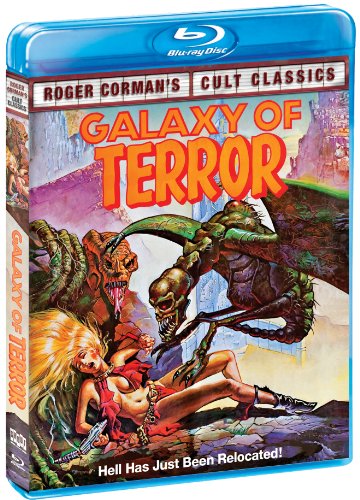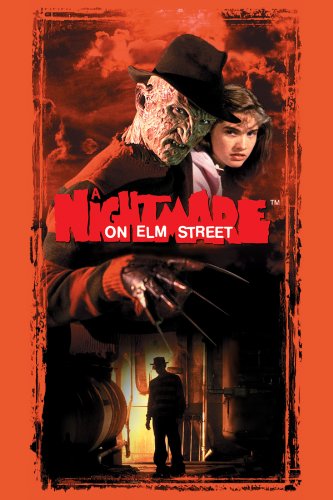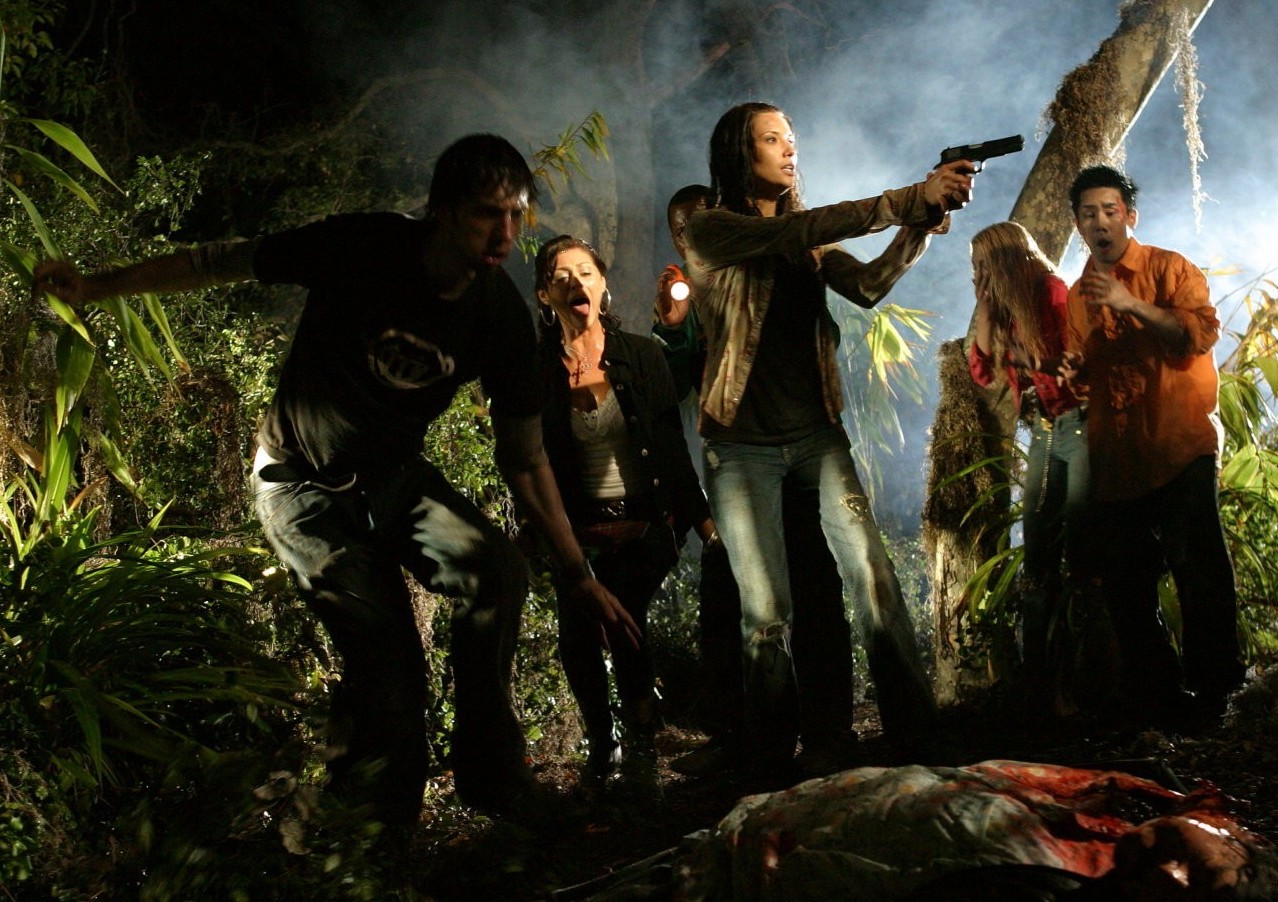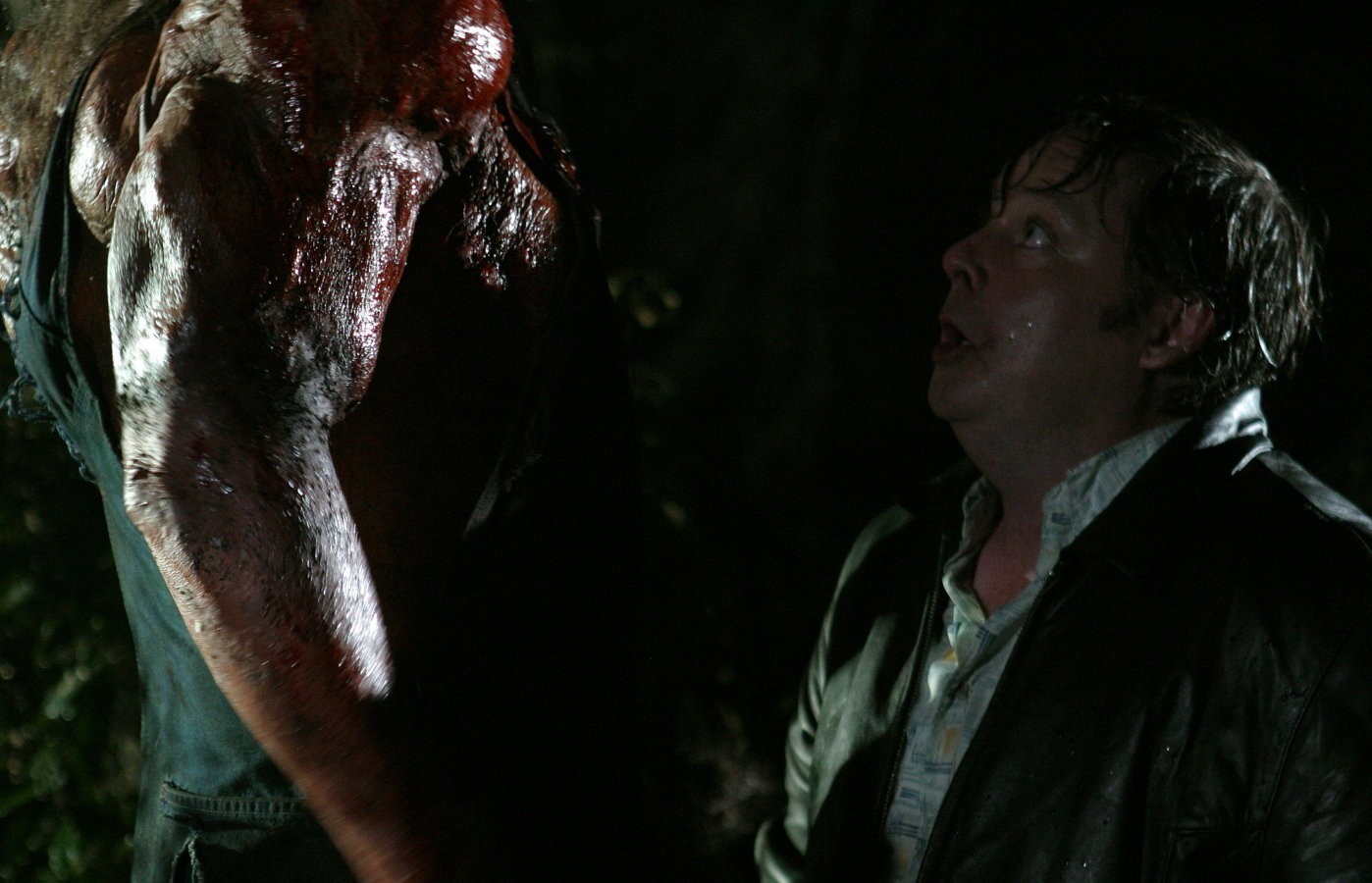
GALAXY OF TERROR is exploitation, pure and simple – I mean, if you’ve got a giant-maggot-on-naked-woman rape scene in your film it nothin’ but, baby. And before going any further, it’s only fair to point out that this observer doesn’t normally go in for the likes of it. Such is generally of the cheap, tawdry, banal, and even sleazy sort, so it’s not really my cup of tea. GALAXY OF TERROR is all of the above; therefore, it stands to reason that I would find it particularly irritating. But we’re a strange lot, we humans. Thus, it is a curious state I find myself in when having to admit to you all that I found a certain degree of fun in watching it – both in 1981 and now via its new Blu-ray DVD release. I can’t say I really stand behind it, but it does have its pluses. It’s also perfect fodder for drive-in theaters (ah, the good ol’ days).
Aside from giggles, I remember very little from my first viewing of the film. In fact, the only solid memories that have stuck with me over the years are:
- As a teenage boy I thought that Joanie Cunningham (Erin Moran) had grown into something kind of cute.
- Something no young boy would likely forget – the maggot rape scene.

Joanie had indeed grown up, but I didn’t find her quite as alluring this time around. I noticed something else about her this time too: her performance wasn’t very interesting. I saw too many moments in which she seemed to have trouble putting all those years of being on a television stage as Joanie Cunningham behind her.
The maggot scene, however, is still a wild & wacky concept, yet it too seemed tamer and less dramatic than my memory had put it. Still, it probably remains the most provocative moment in GALAXY OF TERROR, and it is certainly the scene most other folks remember as well. Without a doubt, the cast and crew find it most interesting to reminisce about. The commentary (found on the Blu-ray edition) makes that quite clear. Everyone seems to remember it humorously and even fondly. Taaffe O’Connell, who played the maggot’s victim, was particularly jocular about it all and seemed to cherish her reflections of it and its cult status.
Aside from Moran and the maggot, however, there wasn’t a single thing about the plot or characters that I could conjure up in my memory. A testament to the film’s somewhat forgettable nature, no doubt. The plot itself is an easy-to-see-through rip off of ALIEN, which had made a huge critical and box-office splash just two years earlier. Oh, sure, one or two crewmembers refer to it as an “homage,” but it’s a rip off.
 While on an intended rescue mission to the planet Moganthus, the crew of the starship Quest finds itself being pulled down to the planet by an unknown energy force. Now, not only must they search for survivors of a lost mission, but they must also find the origin of the energy field that pulled them down and disable it so that their ship may achieve a successful lift off (a la the Death Star’s tractor beam scenario in STAR WARS). The next thing you know, the crewmembers start getting picked off one by one.
While on an intended rescue mission to the planet Moganthus, the crew of the starship Quest finds itself being pulled down to the planet by an unknown energy force. Now, not only must they search for survivors of a lost mission, but they must also find the origin of the energy field that pulled them down and disable it so that their ship may achieve a successful lift off (a la the Death Star’s tractor beam scenario in STAR WARS). The next thing you know, the crewmembers start getting picked off one by one.
“Inspiration” aside, this much can be said for GALAXY OF TERROR: it does have a fairly intriguing psychological concept at its core. The Quest’s crewmembers are supposedly attacked and killed by things drummed up from the fears within their own subconscious. That’s all right as far as it goes; yet the script is sloppy and generally unimaginative, and the direction does little to improve on its weaknesses. With a budget of only about $1,000,000 one could argue that the filmmakers could only do so much, and to a certain extent that is true. Nonetheless, there are moments that counter or betray the psychological aspects behind the issues at hand.
Let’s just take two quick examples. First, there is Taaffe O’Connell’s character. Roger Corman is the one who actually came up with the concept for her demise (he knew it would generate buzz and help sell the movie both domestically and overseas). In his mind, she was supposed to have personal psychological issues in connection to sexual intimacy, not to mention a healthy dislike for little slimy worms (based on a line she throws out somewhere in the script), thus the reasoning for her rape by the giant maggot.
Yet no where in the film does her character demonstrate any negative issues regarding sex or men. In fact, when the ship first launches and a fellow crewmember (played by a pre-Freddy Krueger Robert Englund) doesn’t have a chance to buckle himself in she calls him over, pulls him into her open lap, and wraps her legs around him in a very suggestive manner. The moment is supposed to be a bit of sexual innuendo joke (something that’s even light-heartedly brought up within the commentary), but it goes solidly against what is supposed to be a key psychological hurdle for O’Connell’s character. We may just be talking about a B-picture here, but even B-pictures need to remain honest to their intended nature.
We have a similar problem with the conflict at the end of the film. The late Edward Albert’s character (earnestly played by him, by the way) finally learns that everyone is being destroyed by their own fears and that once this is realized and one’s fears are controlled the plaguing dangers will vanish. This allows him to “pass the test,” as it is put to him. Yet, just a few minutes later he is confronted by the creatures conjured up by the minds of his fellow crewmembers who have met with grizzly fates and by the dead crewmembers themselves. His only defense is to try to physically confront them and ward them off. Again, this seems in direct conflict with what he just learned and the “test” that he just passed.
If you think I’m spending too much time concerning myself with what I see as weaknesses within a minor exploitation piece (and admittedly, I’m sure I didn’t care about them as a teen), I’ll do you a favor and stop there – except to point out that England’s character is simply forgotten about toward the film’s end, demonstrating more careless lack of concern. Be assured, however, that there are many other points one could pick away at. Even director Bruce Clark admits that the script is somewhat poorly fleshed out.

But hey, if you can set all that in the closet and if you can get passed a truly awful electronic score by Barry Schrader (he decided he wasn’t cut out for a life as a composer after GALAXY OF TERROR and wisely decided to step away from it), and if you’re in the mood to watch a low-budget sci-fi horror flick in which a crewmember’s head implodes (specifically a sitcom star’s), and in which maggots rape women, then this just may be the right bit of exploitation for you. Besides, many of the visuals are better (and crisper on Blu-ray) than one would expect from such a small film from its era, so you should be able to have some fun with those as well. Everybody’s favorite Martian (Ray Walston) is in it, too. And as a footnote to you James Cameron fans, he served as the film’s production designer. Word has it that he was quite inventive, intense, and worked day and night on it.
Some may think me a fool to make this final note, but given a smart, psychologically based script (I mean really handled so this time) and a solid studio budget and a good team behind it, the concept for GALAXY OF TERROR, dare I say it, could be well suited for a reimaging. There, I said it. Now you can watch it and see what you think.
The Blu-ray edition includes these special features:
- A rather nice, in-depth making-of doc;
- PDF version of the script;
- Fairly extensive photo gallery;
- Textual pop-up trivia facts on the movie;
- Commentary by maggot rape victim Taaffe O’Connell, creature & makeup crewmember Alan Apone, creature & makeup crewmember Alec Gillis, and production assistant/commentary moderator David DeCoteau.
All in all, the features are a thoughtful, extensive look at this nearly thirty-year old exploitation picture. They certainly add some extra welcome fun to this guilty pleasure. … Taaffe O’Connell definitely thinks so on both counts.
GALAXY OF TERROR (New World Pictures; 1981; 81 min.) Directed by Bruce D. (B.D.) Clark. Screenplay by Marc Siegler and Bruce (B.D.) Clark. Outline by William Stout (uncredited). Produced by Roger Corman. Co-produced by Marc Siegler. Production Design by James Cameron and Robert Skotak. Art Direction by Steve Graziani and Alex Hajdu. Visual Effects Supervision by Tom Campbell. Cinematography by Jacques Haitkin and Austin McKinney. Music Composed by Barry Schrader. Edited By Larry Bock, R.J. Kizer and Barry Zetlin. Cast: Edward Albert, Erin Moran, Ray Walston, Bernard Behrens, Zalman King, Robert Englund, Taaffe O’Connell, Sid Haig, Grace Zabriskie, Jack Blessing, and Mary Ellen O’Neill. MPAA Rating: R for language, violence, gore, and one hell of an odd rape scene.




[serialposts]




